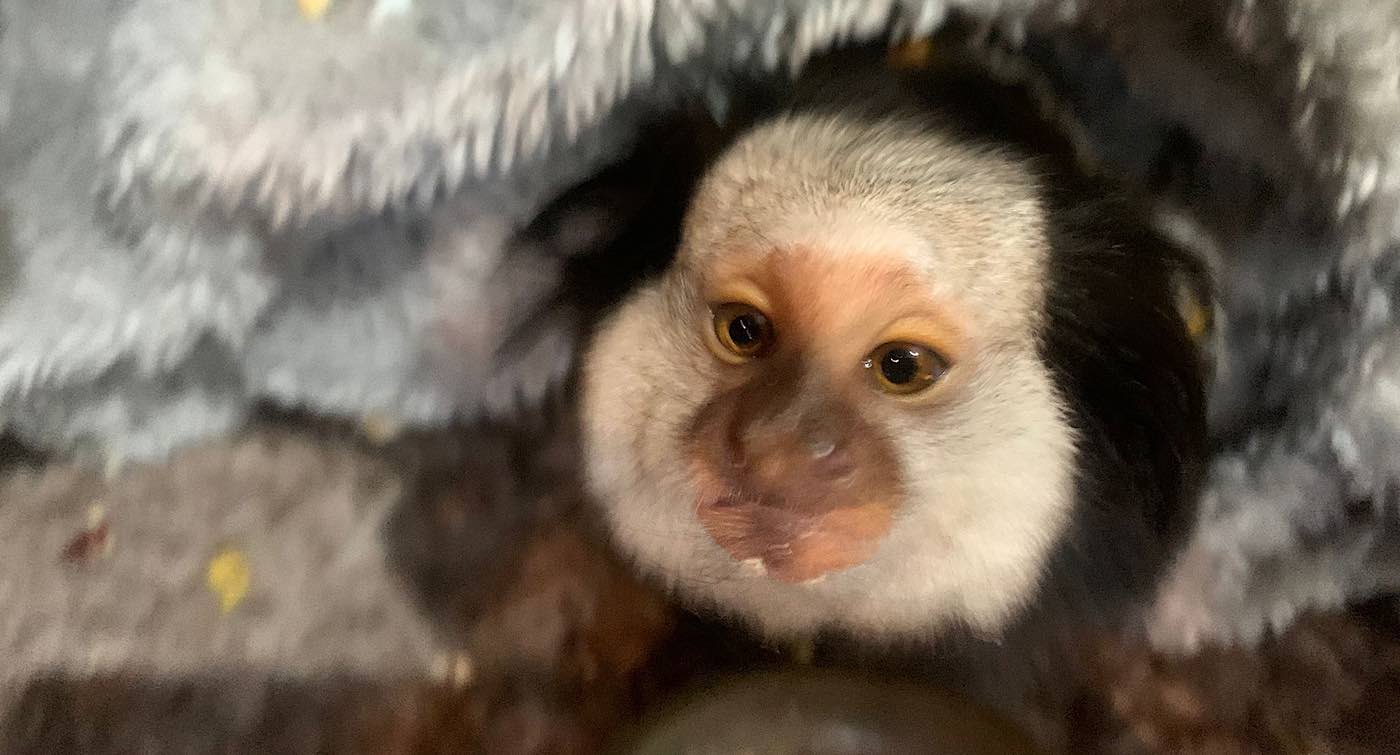For more than a year, there have been no confirmed sightings of the critically endangered southern patas monkeys in their last known refuge, in western Tanzania. In 2021, fewer than 200 of these lithe-limbed primates, Erythrocebus baumstarki, were thought to remain in the open woodlands of this region, and scientists now fear the species is edging closer to extinction.
The southern patas was once confused with the closely related eastern patas monkey, Erythrocebus patas pyrrhonotus, which is found more widely across parts of East and Central Africa, from central Kenya to northeastern Chad. They look similar, and also live in open woodlands at roughly the same elevation. But even before 2015, when southern patas were still present in Kenya, the two species were separated by hundreds of kilometers. They almost certainly never mingled.
Their similar appearance — and other similarities such as their large home ranges and their habit of feeding on the gum of whistling thorn trees, Acacia drepanolobium — was partly responsible for the lack of concerted conservation action needed to protect the southern patas. The fact that the species is shy and rarely seen meant taxonomic research to determine its status as a separate species was lacking. But Yvonne de Jong and fellow primatologist Tom Butynski worked to have the southern patas recognized as a full species in 2021, and to have it included on the list of “Primates in Peril: The World’s 25 Most Endangered Primates 2022-2023.”

The southern patas is due to feature again on this list in 2024. The latest record of a southern patas monkey was that of an adult male in June 2023, researchers say. In 2022, there were just two confirmed sightings: a group of eight individuals and one solitary animal. All three of these sightings were made within acacia woodlands in western parts of Tanzania’s Serengeti National Park.
De Jong and Butynski have maintained a database of southern patas monkey sightings since 2004. Over the past 20 years, those sightings have dwindled in tandem with the monkeys’ shrinking numbers and geographic range.
Research papers the pair authored in 2009 and 2021, for instance, described Grumeti Game Reserve, Ikorongo Game Reserve and Ikona Wildlife Management Area as strongholds for this species. These are all protected areas that adjoin the top of the western corridor of the Serengeti, where it juts out toward Lake Victoria.
“Over the past few years, however, this monkey has not been reported from any of these three areas,” De Jong told Mongabay. “It appears that this species is now present only in the western Serengeti National Park.”
Altogether, the monkeys’ range, which used to extend across central and north Tanzania into parts of southern Kenya, has shrunk by around 85% since the early 20th century, she said.
“This should further alert the Tanzanian authorities responsible for the conservation of the nation’s biodiversity, as well as national and international conservation organizations,” De Jong said.

On those rare occasions when southern patas monkeys have been spotted in the wild, and coordinates of the sightings have been recorded, Butynski and De Jong have used these to estimate the monkeys’ current tiny distribution.
George Lohay is head scientist at the Grumeti Fund, a nonprofit that carries out conservation and community development work in the Serengeti’s western corridor. Grumeti Fund staff and tour guides from Singita, a local ecotourism firm, recorded the second-last known sighting of southern patas monkeys in 2022. Lohay said that 15 years ago the animals were frequently spotted in the 24,200-hectare (59,800-acre) Ikona Wildlife Management Area.
In 2022, his colleagues saw just nine in total. “Unfortunately, the population in this area has since disappeared entirely.”
The Grumeti Fund plans to submit a proposal to the state-run Tanzanian Wildlife Research Institute to carry out its own survey of the monkeys next year, Lohay said. This will include setting up camera traps in the southern patas’s last refuge in the western Serengeti.
“Our immediate priority is to determine the current population size and identify the causes behind their decline,” he said. “This will enable us to make informed recommendations for conservation actions.”
It’s a worrying sign that the wide network of informants comprising researchers, safari guides, camp owners and cattle herders that Butynski and De Jong have cultivated over the past 20 years have not reported a sighting in 2024. With their distinctive black face masks and russet-colored backs, this species can’t be mistaken for anything else.
“Herders are a great source of information, [especially] when it concerns historic records,” Butynski said. “People generally readily identify this species when shown a photograph or drawing.”
If the southern patas monkeys are now restricted to the western Serengeti, the species is likely marooned there. Areas just beyond the park’s western boundary are heavily populated with people and their dogs, which pose a grave risk to the monkeys as they try to reach scarce water sources.
“Domestic dogs kill primates, including the semiterrestrial patas monkey,” Butynski said.
He added he worries that without urgent conservation action, the southern patas will become the second African primate to go extinct in recent years. Miss Waldron’s red colobus monkeys (Piliocolobus waldroni), once resident in Ghana and Côte d’Ivoire, haven’t been recorded by experts in the wild for more than 40 years and are believed to be extinct.
“There seems to be a high chance that the southern patas monkey will be next, and soon,” Butynski said.
This article by Ryan Truscott was first published by Mongabay.com on 9 December 2024. Lead Image: A southern patas monkey near Kirawira Camp, Serengeti National Park. Image courtesy of Katie Sanborn.







Leave a Reply